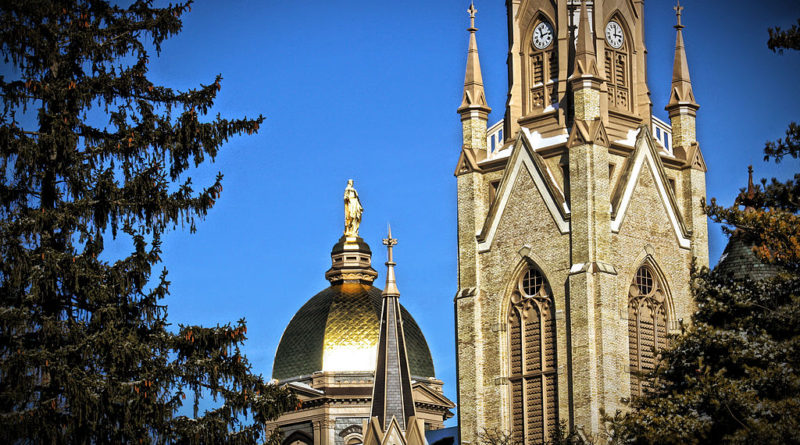University of Notre Dame Earns Two New LEED Gold Certifications
By Rachel Leber
NOTRE DAME, Ind. — The University of Notre Dame has been exemplary with its commitment to follow LEED standards for all new construction since 2011. Its most recent success in this area includes LEED Gold certification for new construction for its two new residence halls: Flaherty Hall and Dunne Hall.
Notre Dame adopted a sustainable buildings policy in 2011 that requires all new construction to be up to LEED standards. Since the implementation of this policy — and since the two new recent LEED Gold certifications — Notre Dame’s LEED Gold–certified buildings count has risen to eight. The other LEED Gold certified buildings on Notre Dame’s campus include Stinson-Remick Hall, the Purcell Pavilion, Geddes Hall, Ryan Hall, the renovation of the Morris Inn and Carole Sander Hall. Additionally, the campus is currently in the process of seeking three more LEED Silver certifications in addition to the existing three already on campus.
Flaherty Hall is a 226-bed residence for women, and Dunne Hall is a 221-bed residence for men. Both buildings opened in 2016, and were certified LEED Gold in December 2017. Designs for both buildings were carefully planned to incorporate methods for saving energy, water and other resources and generating less waste in both the construction and operation of the facilities, according to an article from American School & University.
The efforts of the design team and the university did not go to waste, as the two newly certified residence halls currently consume 28 percent less energy for heating and cooling compared to other newly constructed buildings, according to Notre Dame News. Some of the many methods used to save energy and other resources with these two new residence halls included the installation of high-efficiency faucets, shower heads and toilets, which have already enabled both residence halls to greatly reduce the amount water used. Current numbers show Flaherty Hall using 45 percent less water than a similar new building, and Dunne Hall takes it a bit further by using 51 percent less water.
Other efforts that helped to win these residence halls their LEED Gold status included the minimization of waste as much as possible during construction. In addition, the use of reused materials as much as possible was an important effort. Additionally, 33 percent of materials for both buildings was sourced locally, while some consisted of more than 20 percent of recycled content. All materials, such as paints, coatings, adhesives, sealants, flooring systems and agrifiber products were certified as low-emitting.
From all of its efforts to become greener, Notre Dame has accomplished a 96 percent diversion rate for all construction project waste, according to the Notre Dame website. In addition, 95 percent of building space uses efficient, non-LED lighting (such as CFLs), and 40 percent of Notre Dame’s outdoor space uses highly efficient LED lighting.
In addition to Notre Dame’s efforts to build sustainable and LEED-certified buildings, the university is committed to waste reduction on campus. Waste reduction initiatives on campus fall into two categories: reducing resource use and recycling. Recycling is coordinated through warehouse and delivery services and is supported by educational programs through the Office of Sustainability.
Additionally, the Office of Sustainability works with academic and administrative departments throughout the campus to find ways to reduce the unnecessary use of materials. The office takes individual choices such as recycling, double-sided printing, reusing furniture and switching to paperless forms of communication seriously, and is another part of how the university is able to make great strides in the area of sustainability for the campus and the school as a whole.

